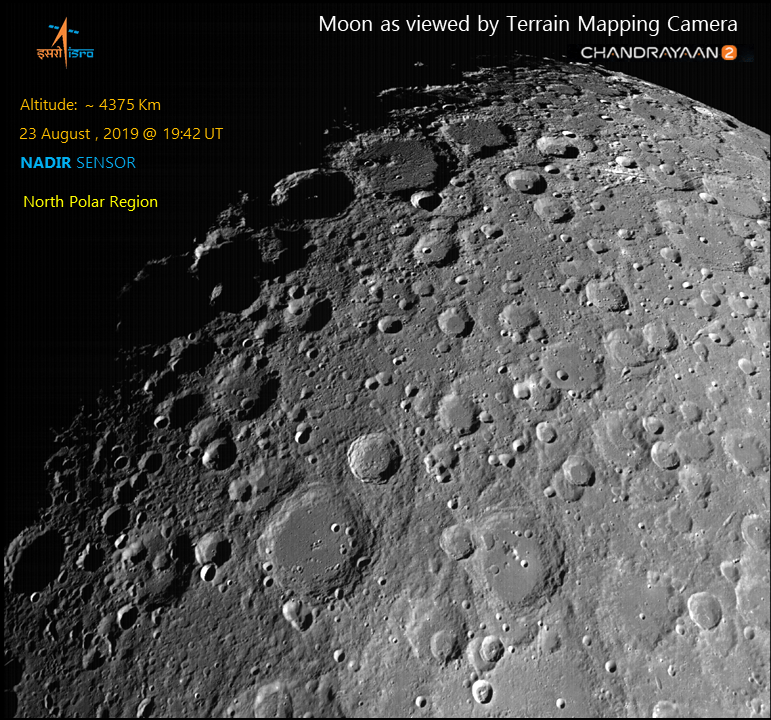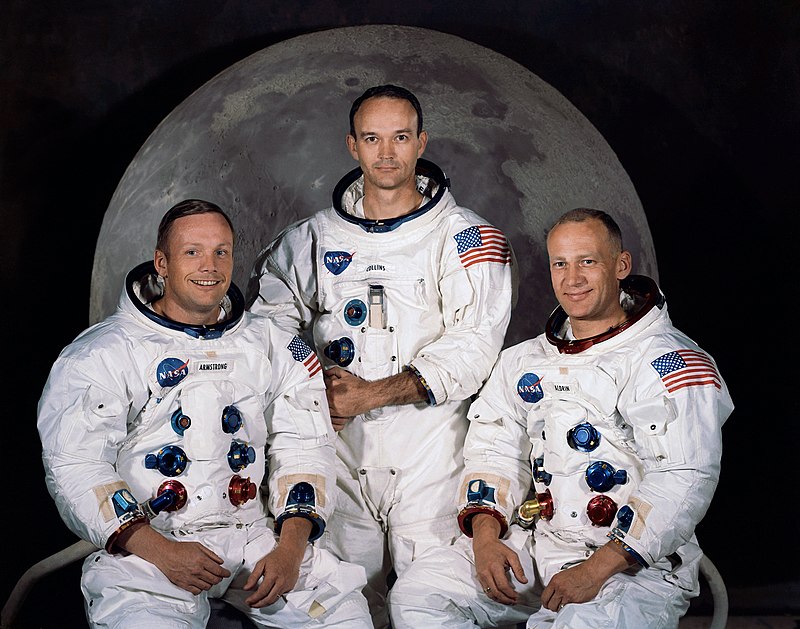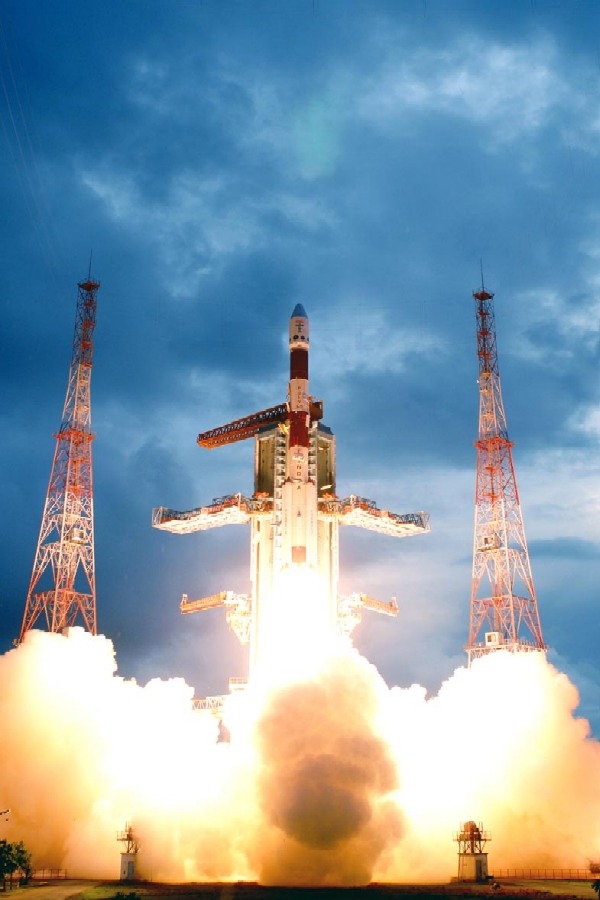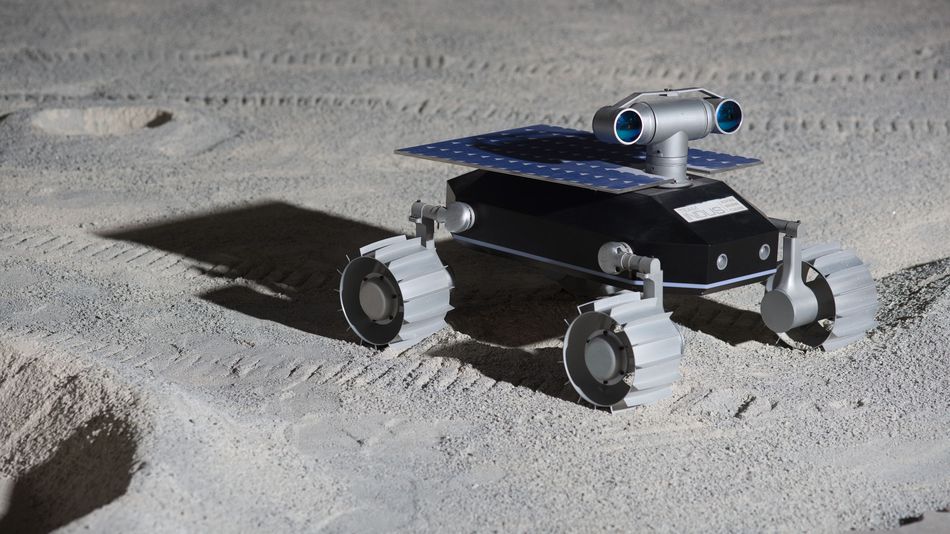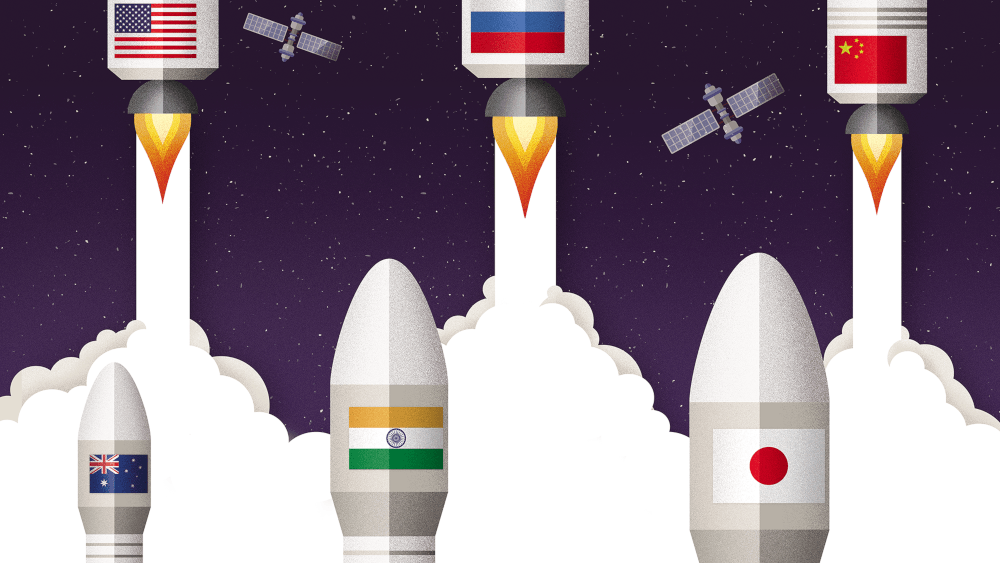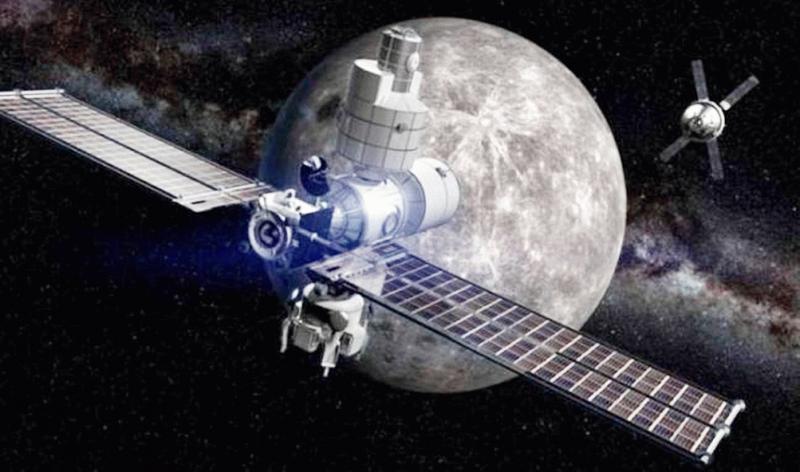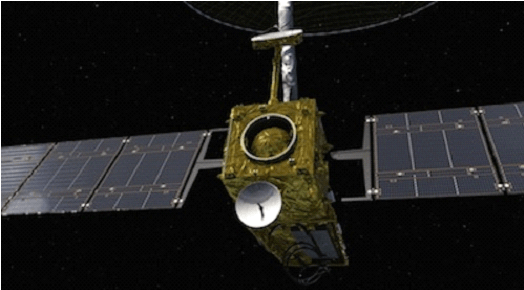As u all know that INDIA launched his second lunar exploration mission named Chandrayaan-2. Today we will discuss all about Chandrayaan-2. After that most of the questions put in your mind got the answers.
So today we will cover some important questions related to the lunar program such as:
- WHAT IS CHANDRAYAAN-2 ALL ABOUT AND WHY IS IT SPECIAL?
- HAVE INDIA ENTERED THE ASIAN SPACE RACE AND WHERE DO INDIA, JAPAN AND CHINA STAND?
- WHAT IS THE IMPORTANCE OF THE MOON?
- WHY ARE ALL THESE COUNTRIES SUDDENLY WORKING ON LUNAR MISSIONS AND WHAT IS THE RATIONALE BEHIND IT?
THE MOON
Earth’s only permanent natural satellite. If you think about it the dinosaurs saw the Moon. The Moon there when the dinosaurs roamed the earth and they probably lifted their necks and saw this beautiful celestial round object in the sky and the first Human saw the moon. For thousands of years, human beings have been inspired and they were always awestruck when they saw this beautiful white object in the sky. It is part of our culture, our literature, our traditions as well. We relate a lot of things to the Moon but we don’t really know much about this beautiful object in the sky now to be first and never to know about the Moon was initiated by USSR. The Soviet Union’s Luna Program was the first to reach the Moon with unmanned spacecraft in 1959. Some even call this The Beginning the Space Race between USA and USSR. Under the Lunar Program, the USSR sent many unmanned spacecraft to the Moon to understand what its surface is made does it have Magnetic Field or not and they manage to collect a lot of information from the Luna Program. After that, a major milestone to reach by USA Apollo 11 was the first space flight that landed the first two human beings on the Moon. Finally, Man was on the Moon and the first man to be on the Moon was Niel Armstrong and the second one off-course was Buzz Aldrin.
Since then we have made a lot of developments in our endeavors to understand the Moon.
So far twelve men have walked the surface of the Moon and all of them are Americans.
Also See: Google Algorithm changes and updates
12 US Astronauts from the Apollo Program Missions:
- Apollo 11: Niel Armstrong(NASA Civilian) and Buzz Aldrin(USAF)
- Apollo 12: Pete Conrad(US Navy) and Alan Bean(US Navy)
- Apollo 14: Alan Shepard(US Navy) and Edgar Mitchell(US Navy)
- Apollo 15: David Scott(USAF) and James Irwin(USAF)
- Apollo 16: John Young(US Navy) and Charles Duke(USAF)
- Apollo17: Gene Cernan(US Navy) and Harrison Schmitt(NASA Civilian, Geologist)
Gene Cernan was the last person who ever walked at the surface of the Moon till 2018 off-course sometime in future it might be changed. So we can clearly acknowledge that the United States of America had convincingly won the Space race and now was leading the way in lunar exploration but soon other countries caught up. INDIA caught up in 2008 when it launched the Chandrayaan-1 Mission.
CHANDRAYAAN – 1
Chandrayaan-1 was launched in October 2008 and it operated until August 2009. The estimated cost of this project was 386crore rupees. It achieved a Slot of things generally and one was able to understand the Moon a lot better. It provided ISRO a lot of information among its many achievements the greatest achievement and make sure that you pay attention to this one because we will discuss this a lot the main achievement of Chandrayaan-1 was the discovery of the widespread presence of water molecules in the lunar soil. So does that mean that there is Water on the Moon?
Yes, actually the Moon has water although not in liquid form you see liquid water cannot persist on moon’s surface and water vapor is decomposed by and other elements as well, of course, this is because the Moon does not have an atmosphere. Moon does not have an atmosphere because its gravity is very low, the moon’s gravity as you know is one-sixth of that of Earth’s and because of other reasons as well the moon does not have an atmosphere. It does not have any shield from the Sun rays and that’s why we cannot really expect any liquid water on the surface of the Moon. But scientist even in the 1960s especially The Russian scientist, they understood that the polar caps of the moon could harbor some frozen water, especially the South Pole of the Moon or we can say that the dark side of the Moon. This side of the moon does not really get a lot of exposure to the sun’s rays and it is actually ridiculously cold over here. Now our endeavor should find out what exactly lies in this part on the Moon, and this is where Chandrayaan-2 comes in.
Now before we know how Chandrayaan-2 will help us unravel the mysteries of the South pole of the Moon, let’s understand what exactly is Chandrayaan-2 mission all about.
CHANDRAYAAN-2
Chandrayaan-2 is India’s second mission to the Moon and it is totally indigenous mission comprising of an Orbiter, Lander and a Rover. So after reaching 100km Lunar orbit the lander housing the rover will separate from the orbiter. GSLV will launch the Chandrayaan-2 Mission from the Earth’s gravity in the space and then it will reach the moon. So after reaching the moon the orbiter in the Chandrayaan mission will keep on orbiting the moon, but the orbiter will detach a lander.
Now, What Exactly is a Lander?
Well look ISRO’s ambition mission is to actually land a rover on the moon. So that we can do a lot of research over there. ISRO will probably drop the rover from the orbiter and it will help to take a huge fall.
We need to make sure that the rover land safely, this is why we need a lander and this is why soft landing will play such a critical role because it will have to make sure that the rover is landed safely on the moon’s surface. So that it can conduct all the scientific research over there that it needs to conduct.
So, the total cost of this project will be around 800 crore rupees definitely a lot cheaper than a lot of Hollywood Movies and the launch vehicle that will be used will be GSLV f10. Now the purpose of this mission is to collect data on Lunar Proforgraphy, Mineralogy, Elemental abundance, and Lunar Exosphere and Signatures of Water–Ice.
Moon Rover:
Till date, three Countries have had Rovers on Moon, The Soviet Union, The United States of America and most recently China. Lunokhod-1 was the first moon rover to be on the surface of the moon and it was sent by The Soviet Union in 1970.
Let’s talk about China’s YUTU Rover. YUTU was launched on 1 December 2013 and it reached the moon’s surface on 14 December 2013, it was an unmanned lunar rover that performed the part of China’s Chang-3 Mission to the Moon. China targeted the Mare Imbrium area of the lunar surface. It lasted on the lunar surface for just about 14 Days. Although it was meant to last for a lot longer after that it had some technical glitch and it stopped working over the moon but it still stationary and it is collecting some data and some it is sending it back to China. I would like to tell you that India’s lunar rover will last for 14 days as well it is meant to last only 14 days because the scientists at ISRO believe that 14 days are enough for the lunar rover to do all the experiments. They wanted to do on the south pole of the moon. The rover will do all the research on the ground then it will send the data to the lunar orbiter and then the orbiter will send the data back to ISRO.
A lot of scientists and astrophysicists believe that if we do a lot of research on the creators on the moon we might unravel some of the mysteries of the origin of the moon. Now I would also mention that INDIA will be focusing on the southern part of the moon. USA and USSR always focus on the equatorial region of the moon and they always landed their lunar rovers and their spacecraft.
INDIA, JAPAN, AND CHINA ARE LOCKED IN A SPACE RACE?
It is a very intriguing question, as we all see that two generations ago the space race was a Cold War subplot pitting the USA against the USSR. Of course, the USA won both the Cold War and Space Race, and now INDIA and JAPAN have their lunar missions each both of them have had a lunar mission in the past and both the lunar missions were successful. Japan’s JAXA(Japan Aerospace Exploration Agency) lunar orbiter spacecraft Selene landed on the moon in 2009.
Now when it comes to lunar exploration India and Japan have pretty much on equal footing, although INDIA will get the upper hand after rover is landed on the lunar surface. But we also need to understand a very basic fact that both the countries INDIA and JAPAN pale in comparison to China’s accomplishment.
China has 2003 moon rover YUTU was its 3rd successful lunar mission. So China has had more lunar missions than INDIA and JAPAN combined. The Chinese National Space Administration has a huge budget and its budget is bigger than that of India’s and it gives China a lot of financial muscle to make sure that its mission is completed on time and they used the best equipment.
China became the 3rd country to put a man in space as well with its own rocket after the Soviet Union and the USA. India has not even achieved that, we do not know when will we see the first Indian in space with our own rocket launchers. We have seen Rakesh Sharma but of course, he was taken to space by the Soviets. So we need to catch up and for the time being, I don’t really think India and Japan will be able to catch up to China. China is really far ahead and their budget of China National Space Administration is increasing by the year and if you thought all this was not enough then China is also planning to build its own Space Station.
What really is SPACE STATION?:
Space Station the name pretty much reveals its utility. It is a station in the space it orbits the earth and it helps in a lot of space knitted research. Right now the biggest Space Station in operation is the ISS it will probably retire at around 2024 or 2025. If its funding is not increased and from the looks of it, it is meant to be retired in about half a decade also. After that, if the Chinese government successfully manages to put their space station in Earth’s orbit, then China will become a very important country for space exploration. Even though China’s Space Station will be quite smaller than that of ISS. The ISS is around 109meters in length and China’s Space Station will be only 37meters in length but still, it is quite amazing feat that China will manage to put a Space Station in Space on its own.
Now the space race is not limited to only INDIA, JAPAN, and CHINA. On the 10 countries that have independently successful launched a satellite into orbit, 6 of then are ASIAN. The other four countries are Iran, Isreal, and North Korea. So, definitely the competition is heating up. Since we are talking about the progress made by all the Asian Countries we should also discuss what Pakistan has done. Pakistan does indeed have a space organization, their space agency is called Space and Upper Atmosphere Research Commission(SUPARCO). Well, unfortunately, SUPARCO has not really made a lot of development primarily because Pakistan entire budget is usually spent in internal domestic use and their military purposes, So very less are left for scientific research and development, especially space exploration. So that the last satellite that Pakistan was able to launch was PakSat-1R. Even this satellite was entirely made by China Great Wall Industry Cooperation and it was launched by China as well. So it is quite sad in my opinion that Pakitan has not able to contribute to space exploration, I am sure there are a lot of bright minds in Pakistan that can give new ideas and hopefully this will change in the future.
So, in a nutshell, we have understood that the Asian race is pretty much about three Countries INDIA, JAPAN, and CHINA. The rest of the countries have a lot of catching up to do. These 3 countries have really developed their Space program tremendously. Now one thing that we need to understand here is that India and Japan alone cannot compete with China, both of them must join hands in order to do something that will actually be of some match to China’s profits. There are many lessons that Japan can offer INDIA, such as its success with public-private collaboration in the space launch and exploration sector: for nearly two decades, Mitsubishi Heavy Industries has been the primary manufacturer and operator of JAXA’s expendable launch system. So perhaps Mitsubishi can help India’s launchers as well like PSLV and GSLV. This is something that both the countries can consider, other than the engagement right now between Japan and India in terms of space exploration is in a very primitive stage, I think both the countries do need to step up if they want to pose any competition in front of China otherwise both the countries will be busy with there own missions and China will go past both the countries quite easily. So it is very important that both the countries try to make sure that their space mission is in sync and the work together.
Hope all of us be will become SELENOPHILE when India’s Chandrayaan-2 does indeed become a success.
Have something to ask???? Please ask in comments or contact us.
Follow us on Facebook, Instagram and Twitter.


